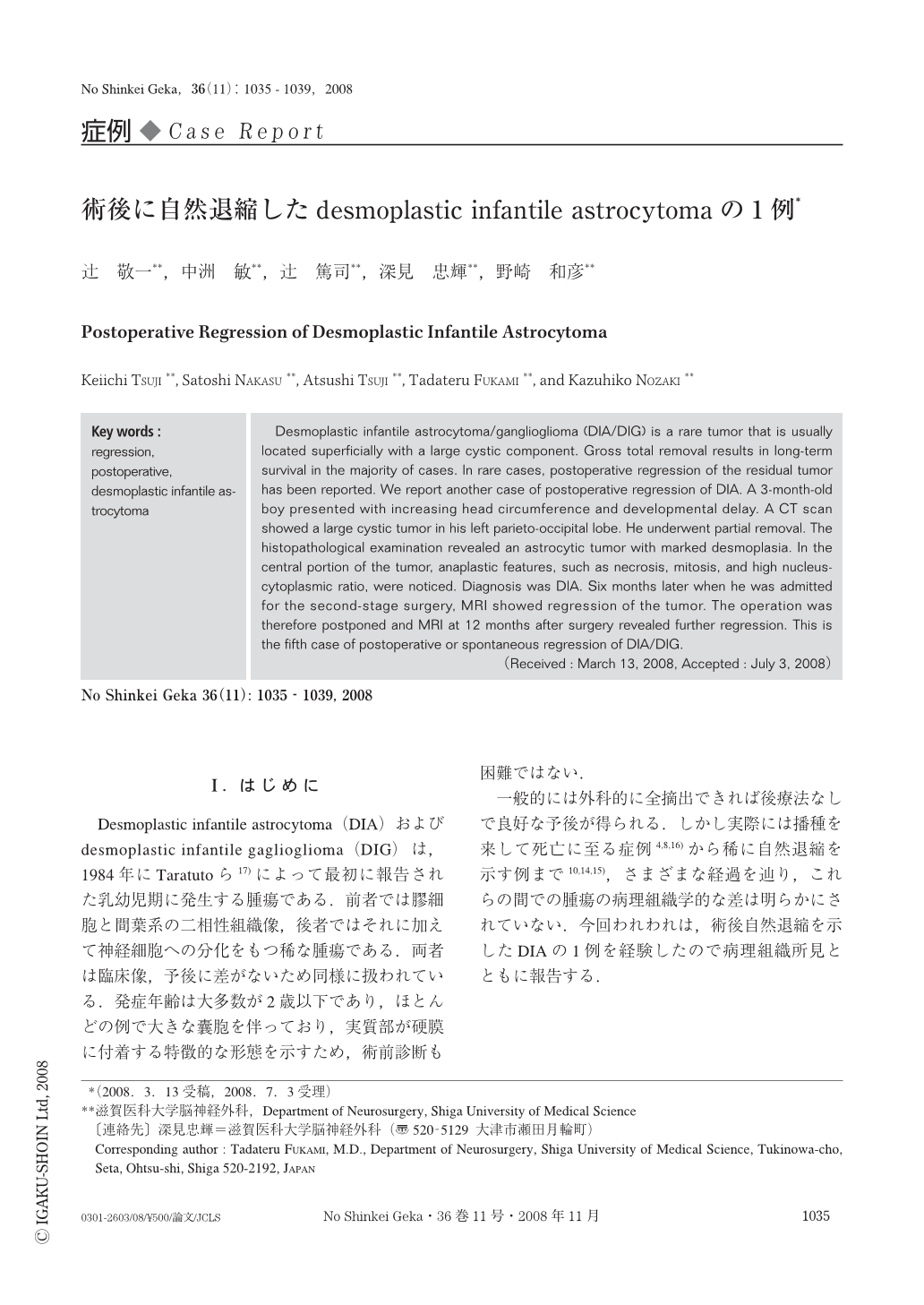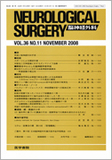Japanese
English
- 有料閲覧
- Abstract 文献概要
- 1ページ目 Look Inside
- 参考文献 Reference
Ⅰ.はじめに
Desmoplastic infantile astrocytoma(DIA)およびdesmoplastic infantile gaglioglioma(DIG)は,1984年にTaratutoら17)によって最初に報告された乳幼児期に発生する腫瘍である.前者では膠細胞と間葉系の二相性組織像,後者ではそれに加えて神経細胞への分化をもつ稀な腫瘍である.両者は臨床像,予後に差がないため同様に扱われている.発症年齢は大多数が2歳以下であり,ほとんどの例で大きな囊胞を伴っており,実質部が硬膜に付着する特徴的な形態を示すため,術前診断も困難ではない.
一般的には外科的に全摘出できれば後療法なしで良好な予後が得られる.しかし実際には播種を来して死亡に至る症例4,8,16)から稀に自然退縮を示す例まで10,14,15),さまざまな経過を辿り,これらの間での腫瘍の病理組織学的な差は明らかにされていない.今回われわれは,術後自然退縮を示したDIAの1例を経験したので病理組織所見とともに報告する.
Desmoplastic infantile astrocytoma/ganglioglioma (DIA/DIG) is a rare tumor that is usually located superficially with a large cystic component. Gross total removal results in long-term survival in the majority of cases. In rare cases, postoperative regression of the residual tumor has been reported. We report another case of postoperative regression of DIA. A 3-month-old boy presented with increasing head circumference and developmental delay. A CT scan showed a large cystic tumor in his left parieto-occipital lobe. He underwent partial removal. The histopathological examination revealed an astrocytic tumor with marked desmoplasia. In the central portion of the tumor, anaplastic features, such as necrosis, mitosis, and high nucleus-cytoplasmic ratio, were noticed. Diagnosis was DIA. Six months later when he was admitted for the second-stage surgery, MRI showed regression of the tumor. The operation was therefore postponed and MRI at 12 months after surgery revealed further regression. This is the fifth case of postoperative or spontaneous regression of DIA/DIG.

Copyright © 2008, Igaku-Shoin Ltd. All rights reserved.


